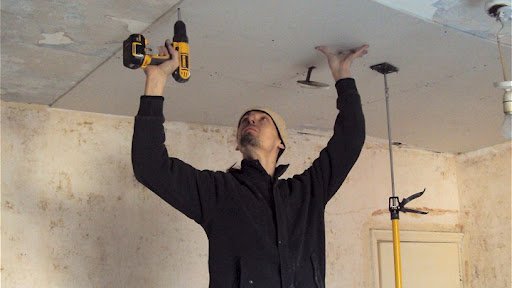Introduction
Respiratory diseases, such as chronic obstructive pulmonary disease (COPD), asthma, and pulmonary fibrosis, often develop silently before symptoms become severe. Early detection is crucial for effective treatment and improved quality of life. Pulmonary Function Testing (PFT) is a non-invasive diagnostic tool that assesses lung health, identifies abnormalities, and helps physicians intervene before conditions worsen.
In this comprehensive guide, we’ll explore:
-
What pulmonary function testing is and how it works
-
Key respiratory conditions detected by PFT
-
The different types of pulmonary function tests
-
Who should consider PFT and when
-
The benefits of early detection
-
What to expect during a PFT
By the end, you’ll understand why PFT is a vital tool in respiratory care and how it can help maintain lung health.
What is Pulmonary Function Testing (PFT)?
Pulmonary Function Testing (PFT) is a group of tests that measure how well the lungs take in and release air, absorb oxygen, and remove carbon dioxide. These tests help diagnose lung disorders, monitor disease progression, and assess treatment effectiveness.
How Does PFT Work?
During a PFT, a patient breathes into a device called a spirometer, which records:
-
Lung volume (how much air the lungs can hold)
-
Airflow rate (how quickly air moves in and out)
-
Gas exchange efficiency (how well oxygen enters the bloodstream)
Results are compared to standardized values based on age, sex, height, and ethnicity to determine if lung function is impaired.
Key Respiratory Conditions Detected by PFT
PFT plays a critical role in diagnosing and managing several respiratory conditions, including:
1. Chronic Obstructive Pulmonary Disease (COPD)
-
What it is: A progressive disease causing airflow blockage (commonly from smoking).
-
How PFT helps: Spirometry measures FEV1 (Forced Expiratory Volume in 1 second) and FVC (Forced Vital Capacity). A low FEV1/FVC ratio indicates COPD.
-
Stats: According to the WHO, COPD affects 328 million people globally and is the 3rd leading cause of death worldwide.
2. Asthma
-
What it is: A chronic inflammatory disease causing airway narrowing.
-
How PFT helps: A bronchoprovocation test checks airway sensitivity. Reversible airflow obstruction after using a bronchodilator confirms asthma.
-
Stats: The CDC reports that 1 in 13 people in the U.S. has asthma.
3. Pulmonary Fibrosis
-
What it is: Scarring of lung tissue leading to breathing difficulties.
-
How PFT helps: A diffusion capacity test (DLCO) measures how well oxygen passes into the blood, indicating fibrosis severity.
4. Restrictive Lung Diseases
-
What it is: Conditions (like scoliosis or obesity) that limit lung expansion.
-
How PFT helps: Reduced Total Lung Capacity (TLC) confirms restrictive patterns.
Types of Pulmonary Function Tests
Several PFTs are used depending on the suspected condition:
| Test | Purpose |
|---|---|
| Spirometry | Measures airflow obstruction (COPD, asthma). |
| Lung Volume Test | Assesses total lung capacity (restrictive diseases). |
| Diffusion Capacity | Checks oxygen transfer ability (fibrosis, emphysema). |
| Exercise Stress Test | Evaluates lung function during physical activity (exercise-induced asthma). |
Who Should Get a Pulmonary Function Test?
You may need a PFT if you experience:
✔ Chronic cough or wheezing
✔ Shortness of breath (dyspnea)
✔ History of smoking
✔ Exposure to lung-damaging pollutants (asbestos, chemicals)
✔ Family history of lung disease
High-risk groups include:
-
Smokers & former smokers
-
Workers exposed to industrial dust/fumes
-
People with a history of respiratory infections
When Should You Get Tested?
-
Routine screening: If you’re at high risk for lung disease.
-
Pre-surgical evaluation: Before major surgeries to assess lung capacity.
-
Disease monitoring: For asthma or COPD patients tracking progression.
Benefits of Early Detection Through PFT
-
Prevents Disease Progression
-
Early COPD detection can slow decline with smoking cessation and medications.
-
-
Personalized Treatment Plans
-
Asthma patients can adjust inhaler use based on PFT results.
-
-
Avoids Complications
-
Identifying fibrosis early allows for prompt anti-fibrotic therapy.
-
-
Improves Quality of Life
-
Proper management reduces hospitalizations and enhances daily functioning.
-
What to Expect During a PFT
A typical PFT takes 30-60 minutes and involves:
-
Pre-test instructions (avoid smoking, heavy meals, or bronchodilators).
-
Breathing maneuvers (inhaling/exhaling forcefully into a spirometer).
-
Possible bronchodilator test (if asthma is suspected).
Is PFT Safe?
Yes, PFT is non-invasive. Rare side effects may include dizziness or shortness of breath.
Conclusion
Pulmonary Function Testing (PFT) is a powerful diagnostic tool for detecting early signs of respiratory diseases before symptoms escalate. Whether you’re at risk for COPD, asthma, or pulmonary fibrosis, early PFT screening can lead to timely treatment, better disease management, and improved long-term outcomes.
If you experience persistent breathing difficulties or fall into a high-risk category, consult a pulmonologist about getting tested. Your lungs are vital—don’t wait until it’s too late.












Leave a Reply